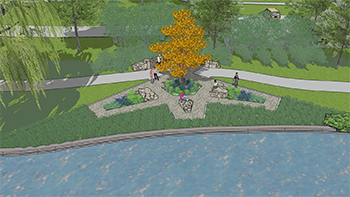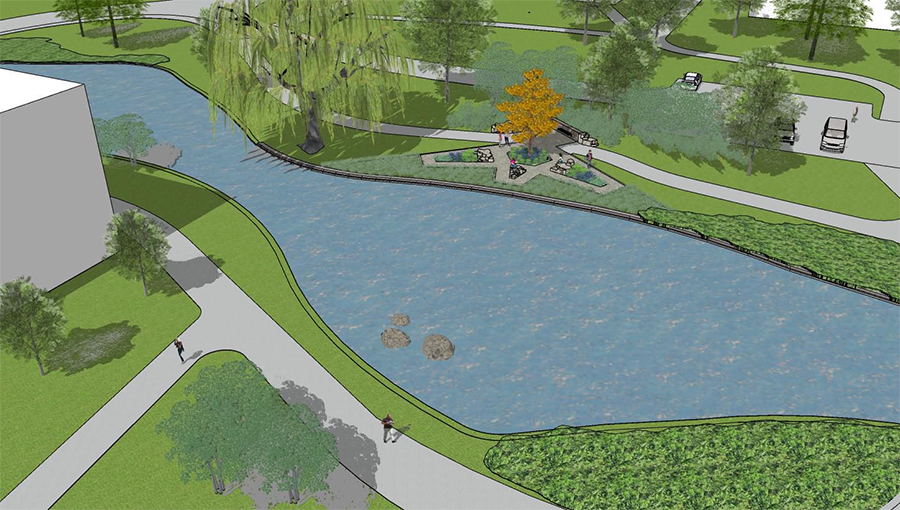STATUS: The Contemplative Space is in the final stages of construction and installation as we work with Black, Indigenous and European-descended stakeholders to create educational signage for display in the area and content for our website.
History and Context
 From 2017-2019, the SUNY New Paltz campus community undertook an open and inclusive process and dialogue focused on the names of five residence halls and the campus dining hall. These six buildings bore the names of European families who settled the village now known as New Paltz, and who also enslaved Africans in the era prior to emancipation in New York. The buildings were ultimately renamed in 2019.
From 2017-2019, the SUNY New Paltz campus community undertook an open and inclusive process and dialogue focused on the names of five residence halls and the campus dining hall. These six buildings bore the names of European families who settled the village now known as New Paltz, and who also enslaved Africans in the era prior to emancipation in New York. The buildings were ultimately renamed in 2019.
In its final report recommending renaming, the University’s Diversity & Inclusion Council called for the creation of “a contemplative space that includes historical information and invites community gathering and reflection.” Like the renaming process, we committed that we would not erase the narratives or histories of any group, but rather provide an enduring space that acknowledges and teaches a comprehensive history of New Paltz, including the diverse contributions of Indigenous people, enslaved Africans, early European immigrants, the descendants of these three groups and subsequent waves of diverse immigrants.
The process of envisioning and designing this Contemplative Space began in 2019 with a working group of faculty, staff and students, and has progressed in the years since. The west bank of Gunk Pond, opposite Peregrine Complex, was chosen as the location, and the University has coordinated with designers and architects to advance development of this space.
The project was moving along well until the COVID-19 pandemic in 2020 and a SUNY-wide hold on projects not immediately related to health and safety. We were unable to restart the project until 2022.
Design Elements

The Contemplative Space was envisioned as an area on campus where people could gather and reflect on history and contemporary issues. Campus leadership and Facilities Operations experts worked with outside contractors, including CSArch, an architecture and engineering firm, and Elan Planning, Design & Landscape Architecture, to design such a space.
A primary goal is to reflect the roles played by three distinct groups – Indigenous people, enslaved Africans, and early European settlers – and their descendants in the history and present-day culture of the Town of New Paltz and the SUNY New Paltz community. This tripartite vision is expressed physically in multiple ways, from the creation of three seating areas, to the installation of three sets of educational plaques, to the addition of three boulders in Gunk Pond that will be visible from the Contemplative Space.
Other design aspects pay homage to local history in different ways. A sassafras tree is placed at the center of the space; this native species was widely used in indigenous societies for its medicinal and healing properties. Original plaques from the renamed residence halls, bearing the names of European families that settled the Village of New Paltz, will be mounted on a stone wall on the outer edge of the area. Some of the seating in the area will be on cut stone, visually resonant with the Shawangunk Mountains overlooking campus.
The University is grateful to everyone on and off campus who helped contribute to creating a Contemplative Space that fulfills this vision, and we look forward to finalizing construction and opening it to the campus community soon.
